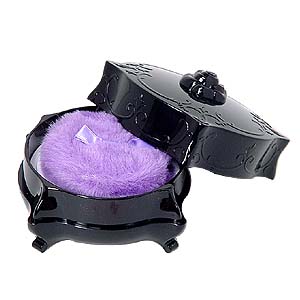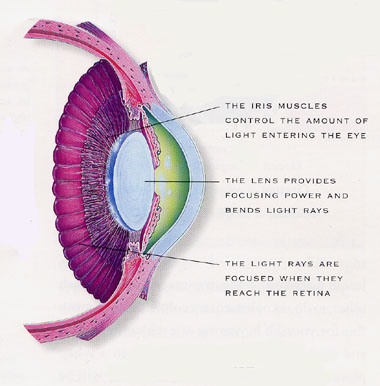




What is color? Finding your color Color & Dressing Color & Make-up Color & Food






|
The Electromagnetic Spectrum
We can see about 40 percent of the colors, contained in sunlight. So although white light appears colorless and intangible, it is made up of distinct color vibrations, which are not only wavelengths but also a "corpuscular structure." The radiant energy of pure white sunlight is a vital factor in nourishing our bodies, our minds, and our spirits, and each color vibration has its own healing qualities. |
|
 |
The color in lights One way colors in sunlight are made visible to us is to pass white light trough prism. Because each of the colors has a different wavelength, each is bent by a different amount. Rainbows are formed when water droplets in the sky act as natural prisms. As sunlight passes through the droplets, each of the different rays is bent by a different amount, creating a rainbow. The rainbow colors form one "octave" of light and are known as the " true hues." Red is the longest wavelength we can see and it as the slowest frequency of vibration. Its magnetic energy is warming and stimulating. Violet has the shortest wavelength and the quickest vibration. It is cooling and cleansing. |
Beyond the visible spectrum At either end of the visible spectrum are many wavelengths we cannot see. Ultraviolet light is just beyond violet, and farther beyond this area electromagnetic rays with increasing frequencies as the wavelengths get progressively shorter; these include X-rays and gamma rays. At the opposite end, infrared light is found just beyond red light. Like red it has warming qualities although it gives off more concentrated heat; these qualities are utilized in infrared lamps. Beyond this are electromagnetic rays with increasing wavelengths and decreasing frequencies; these include radio waves. |
Making colors White light can be separated into three basic or primary colors: red-orange, green, and blue-violet. When these colors of light are projected together, they create white light. This is called additive mixing of colors; it is used, for instance, by color therapists healing with color light. The colors that make up the pigments we use in paints, fabrics, and other materials are different; they are obtained by subtraction of light. This effect produces a different trio of primary pigment colors: red, blue, and yellow; they are considered primary because they cannot be made from other colors. When these are combined as paints, they produce black. Subtractive mixing of colors is used, for instance, when working with paints or objects like clothes or furnishing. |
How Do We Sense Color? Our eyes are undeniably our primary sense organs, for without sight we find living harsh and difficult. It is primarily through our eyes that natural sunlight enters the body, although we also take in light through our skin and through the air we breathe. |
 |
Sensing color through the eyes When light rays arrive at the eye they travel through the pupil and the fluid in front of the eye to reach the lens. Like the lens of a camera, the eye to reach the lens bends (refracts) the light rays, so they come to a focus on retina, a layer of cells at the back of the eye. When light reaches the retina it stimulates the cells there. These cells contain pigments that are sensitive to light. The cells are of two types: rods and cones. Rods are more highly light sensitive and allow us to see in dim light, but do not record color, only shades of gray. Cones, which are less numerous, are comprised of three types, each of which is sensitive to one or the three primary colors of light ?red-orange, green, and blue-violet. The cones that are sensitive to green light are situated directly in the middle of the retina, allowing light to fall into the center of the eye. This makes the color green the most relaxing color for the eyes and, in turn, the mind. |
Light arriving at the retina causes the pigment in the sensory cells to break down. This has the effect of setting off a nervous impulse that travels along he optic nerve to the visual areas (the visual cortex) at the back or the brain. Impulses from the right eye travel to the left side travel to the right half of the brain. This means that the nerve fibers actually cross over, in part of the brain called the optic chiasma. Not all the light impulses received through our eyes are used solely for the purpose of sight, however. Nervous impulses from the eyes travel not only to the visual cortex of the brain but also via the hypothalamus to the pituitary and pineal glands. Therefore, many body functions are stimulated or retarded by light, and different-colored rays also have effects on our energy system and the more subtle layers of our being. |




